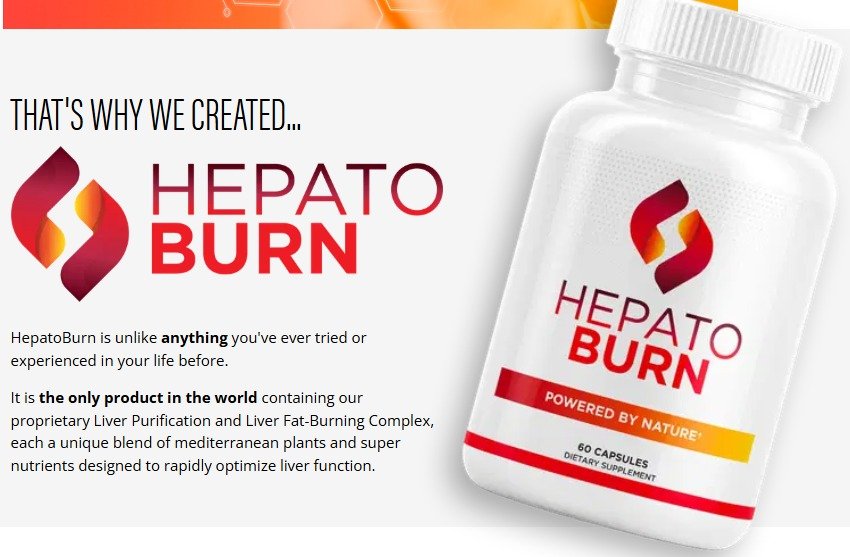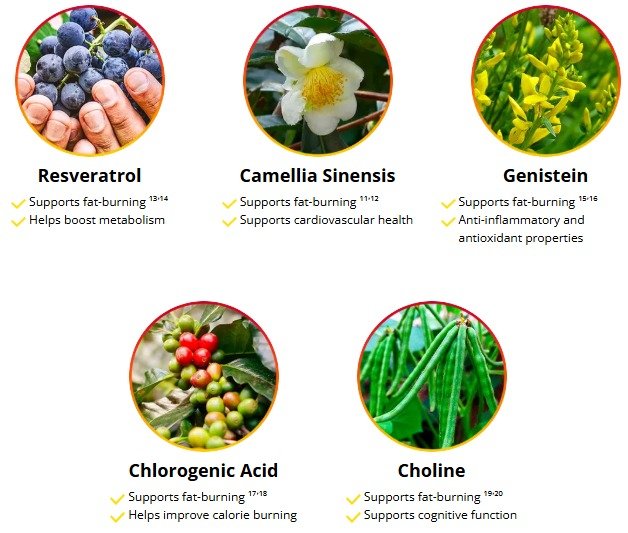Rethinking Weight Management in 2025

This shift has opened the door for supplements that address metabolism at the cellular level, and HepatoBurn is one of the most talked-about newcomers. Rather than promising quick fixes through stimulants or appetite suppression, HepatoBurn is built on the premise that the liver and mitochondria are central regulators of fat storage, energy use, and metabolic flexibility.
Its formula draws from research into mitochondrial efficiency, oxidative stress regulation, and hepatic fat metabolism, positioning it as more than just another supplement. It’s marketed as a tool for restoring balance where many traditional strategies fall short.
Who Is Behind HepatoBurn?
According to its official website, HepatoBurn was developed by a U.S.-based team of nutritional biologists, wellness researchers, and formulation specialists. Unlike many supplement brands that position themselves as “labs” for marketing purposes, the group behind HepatoBurn describes itself as a research–first entity.
While individual scientist names are not disclosed publicly, insiders report that the development process involved:
- In-vitro testing to simulate metabolic pathways
- Compound-pairing experiments to test synergy between botanicals and cofactors
- Bioavailability trials to determine which forms of ingredients best survive digestion and reach target tissues

This structured, research-oriented process aligns with a broader shift in the supplement industry: consumers now expect transparency, rigorous testing, and a departure from the “kitchen-sink” formulations that defined earlier decades.
How HepatoBurn Works: The Mitochondrial Link
At the heart of HepatoBurn’s approach is the idea that mitochondria inside liver cells act as master regulators of fat metabolism. These “powerhouses of the cell” generate ATP (adenosine triphosphate), which fuels nearly every biological process.
When mitochondrial activity slows—whether due to age, toxins, or stress—the body tends to store fat rather than burn it. HepatoBurn attempts to reverse this by supporting mitochondrial uncoupling (a natural process that boosts basal energy expenditure) and activating enzymes that encourage fat release from hepatic cells.
Key intended effects include:
- Enhanced thermogenic signaling without stimulants
- Improved fat mobilization from liver tissue
- Better oxidative stress control to protect mitochondria
- AMPK activation, which helps shift the body from storage to fat-burning mode
Why the Liver Matters in Weight Loss
Most people think of the liver primarily as a detox organ. In reality, it is also the command center for lipid metabolism, glucose regulation, and hormonal signaling. Thousands of mitochondria inside liver cells constantly convert fatty acids into usable energy.
When this process breaks down—whether from poor diet, alcohol, environmental toxins, or simply aging—the result is metabolic inflexibility. That’s when the body struggles to switch between burning carbs and burning fat, often leading to stubborn belly fat, insulin resistance, and fatigue.

What Makes HepatoBurn Different From Standard Supplements?
Most fat burners on the market are built around:
- Stimulants (caffeine, yohimbine)
- Appetite suppressants (fiber blends, 5-HTP)
- Diuretics (temporary water loss)
These methods often deliver short-lived effects while straining the nervous system. In contrast, HepatoBurn emphasizes:
- Stimulant-free design (no caffeine or synthetic accelerants)
- Organ-specific targeting, with a liver-first focus
- Mitochondrial optimization, not superficial calorie-burning tricks
- Adaptogenic balance, using botanicals to buffer metabolic stress
The philosophy is less about overriding the body and more about helping it restore its natural rhythm.
Inside the Formula: Core Ingredients


While the exact blend remains proprietary, HepatoBurn includes several well-studied compounds associated with liver and mitochondrial function:
- Berberine – Supports AMPK activation and insulin sensitivity
- Silymarin (Milk Thistle extract) – A classic liver-protective agent
- CoQ10 and L-Carnitine – Essential for mitochondrial energy transfer and fatty acid transport
- Rhodiola Rosea – An adaptogen that may improve stress resilience and energy regulation
Together, these are designed to nudge rather than shock the metabolic system, which may appeal to individuals seeking gentler, sustainable support.
Who Might Benefit From HepatoBurn?
HepatoBurn is not marketed as a “magic pill” for everyone. Its target audience includes:
- Adults over 30 facing age-related metabolic slowdown
- People with stubborn belly fat despite healthy habits
- Individuals interested in mitochondrial health and detox support
- Fitness enthusiasts or biohackers seeking non-stimulant tools
In short, it’s aimed at those who want long-term cellular support, not a crash solution.
Usage Guidelines and Lifestyle Synergy
The company recommends taking two capsules per day, ideally with meals in the morning or early afternoon. This timing aligns with the body’s circadian rhythm, when liver metabolism is most active.
For best outcomes, the supplement should be paired with:
- A whole-food diet rich in fiber, healthy fats, and micronutrients
- Moderate exercise (resistance training, walking, or HIIT)
- Proper hydration to aid detox and mitochondrial function
- Consistent sleep, since mitochondria repair most during rest
Availability and Consumer Access
As of 2025, HepatoBurn is sold exclusively through its official website. The company avoids third-party retailers like Amazon to preserve quality control and prevent counterfeits. Limited-time discounts and multi-bottle bundles are sometimes offered directly through the site.
Expert Perspectives: The Liver in Focus
Healthcare professionals in functional and integrative medicine are increasingly highlighting the liver’s overlooked role in weight management. As one nutrition consultant put it:
“For clients stuck with stubborn midsection fat, addressing liver mitochondrial health often produces breakthroughs we don’t see with diet alone.”
Why Weight Loss Gets Harder After 30
The challenges HepatoBurn seeks to address become especially relevant with age. After 30, mitochondrial enzyme production declines, liver efficiency decreases, and hormonal shifts (insulin, cortisol, thyroid) compound fat storage tendencies.
What worked in one’s twenties—like calorie restriction or intense workouts—may no longer be enough. This creates demand for organ-specific interventions that restore baseline metabolic flexibility rather than just adding stress to the system.
Final Take: Is HepatoBurn Worth Considering?
HepatoBurn is more than just another supplement in the crowded weight-loss market. By focusing on hepatic mitochondrial efficiency, it addresses one of the most overlooked aspects of metabolism.
- Strengths: stimulant-free, organ-targeted, rooted in cellular science
- Limitations: not a standalone solution, requires consistent use, and long-term research is still emerging
